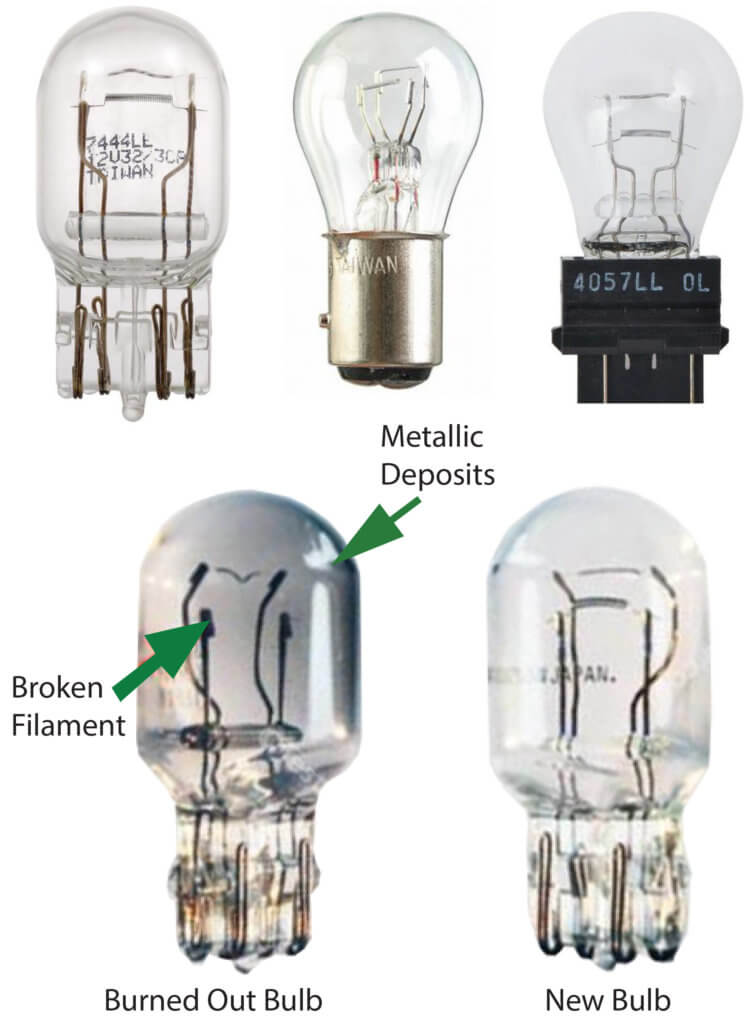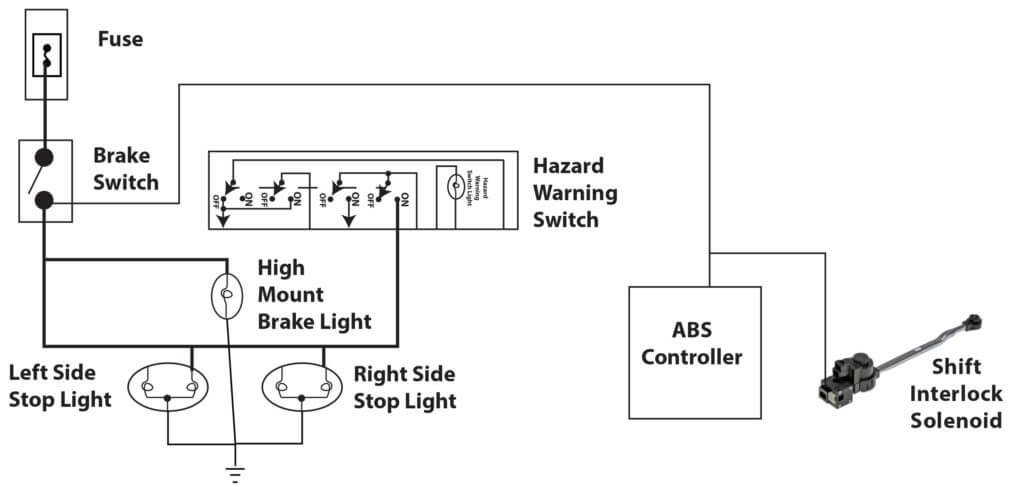Brake lights don’t work — How to diagnose and fix
Brake lights don’t work — Learn how to diagnose and fix
If your brake lights don’t work, the problem can be as simple as burned-out bulbs, a blown fuse, a bad or misadjusted brake light switch, a bad body control module, or a bad ground. Here’s how to diagnose the system.
Start by checking the brake light bulbs
Brake light bulbs can be a single filament or a dual filament style. In a single filament setup, one bulb is for the parking lights and the other bulb is for the brakes and turn signals. In a dual filament setup, one filament is for the parking lights and the other filament is for the turn signals and brake lights.
If your brake lights don’t work, remove the bulb socket and examine the bulb filament(s). A missing or broken filament is a sign of a bad bulb (see images below). A shiny metallic deposit on the inside of the bulb is also a sign of a burned-out bulb.

If a new brake light bulb doesn’t fix the problem, check the fuse
The brake light fuse may be in the underhood fuse box or the instrument panel fuse box. Check the brake light fuse and replace if it’s burned out.
Next, check the brake light switch
Every car maker wires their brake light switch and lights a bit differently, but this diagram is fairly common. In older cars, the brake light switch directly switches power to the brake lights. But in late-model cars, the brake light switch is just an input to the body control module (BCM), telling it to switch power to the brake lights. If the brake lights don’t work, checking the brake light switch is the next thing to check.
Directly wired brake light switch
In a directly wired brake light switch, power flows from the fuse to the hazard switch or the headlight switch before flowing to the brake light switch. Once the brake pedal is depressed, power flows through the brake light switch to the high-mount brake light and the right and left brake lights. The lighting circuit terminates at a single or multiple ground connection.
On vehicles with ABS brakes, the brake light switch is also the trigger for the ABS controller and the shift interlock solenoid. The shift interlock solenoid prevents you from shifting out of park without depressing the brake pedal. In this diagram, the brake pedal switch provides power to the shift interlock solenoid, but in other wiring setups, the shift interlock switch is powered from the ignition switch and the brake light switch provides the ground path to activate the solenoid.
In some other setups, the brake light power must flow through the headlight switch or hazard warning switch.
In still some other setups, the high-mount brake light switch is powered by a separate fuse. The reasoning is that you would still have some brake light if the main fuse blew.

Common stop light wiring diagram
BCM-controlled brake lights
In a BCM setup, the brake light switch is an input to tell the BCM that you’re requesting brake lights. Carmakers use the BCM approach so they can operate the brake lights remotely, like with your key fob in a parking light to find your car.
Use a meter to test your the brake light socket and brake light switch
Set your multimeter to DC volts
The brake light system is “hot at all times,” meaning you don’t have to have the key turned to the RUN position.
Connect the black lead of the meter to a good ground. Using the red lead, touch each terminal on the brake light fuse. You should see battery voltage on both. If so, proceed to the next step.
Locate the brake light switch under the dash on the driver’s side. Back probe the brake light switch. You should see battery voltage at the switch. If so, depress the brake pedal. You should see the voltage drop to near zero. If the voltage remains at battery voltage, you may have burned out bulbs or an open in the wiring.
Remove the brake light bulbs from the socket. With the brake pedal depressed (parking lights OFF), probe the terminals inside the socket. You should see battery voltage on at least one terminal.
Troubleshoot other brake light problems
As I said at the beginning, car makers wire their brake light systems differently. If your tests don’t show the same results I’ve listed here, you may have a different setup. In that case. see these other posts for helpful information
Tail light bulb doesn’t work
https://ricksfreeautorepairadvice.com/lights-dont-work/
©, 2019 Rick Muscoplat
